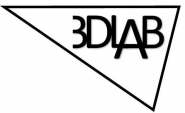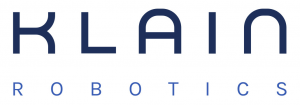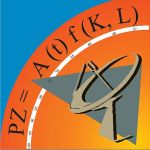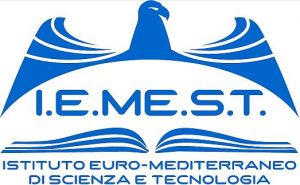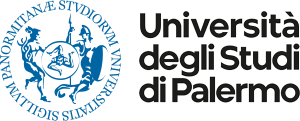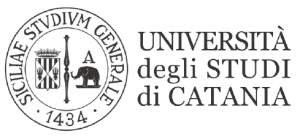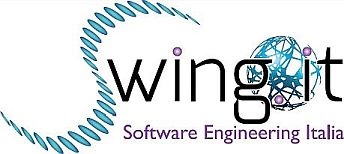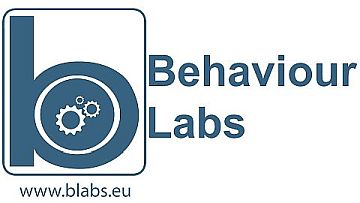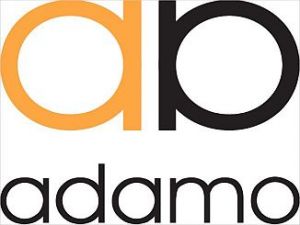KLAIN has been active for almost 20 years in the industrial robotic systems market, becoming over the years the largest European dealer of the Denso-Toyota group. It is one of the founding members of the Italian Association of Mechatronic Automation and carries out its business in the Mediterranean area and in South Eastern Europe. It is active in the field of "Industry 4.0" providing advanced robotic systems to a large number of industrial sectors. In the field of 3D scanning technologies, the company has been active for years in the computer vision sector through the customization of software for the industrial sector. KLAIN is a partner of FabCUBE, an aggregation of companies made up of 6 FabLabs which has applied the 3D reconstruction of historic and monumental buildings to its interior, such as the Notaries' Chapel in Verona and the Church of Cavallermaggiore (see https://vimeo.com/211493379).
Il PSTS is a joint stock consortium company owned by the Sicilian Region and by research institutes and companies operating in various sectors of the economy. The Region has entrusted the PSTS with the coordination role for the strategic area "scientific and technological research"; the PSTS carries out research, innovation and technology transfer activities, attracting investments to support the competitiveness of businesses and create development. The system of relationships involves a network of over 400 subjects between companies, universities, research centers, technological districts, clusters. PSTS has developed over 60 European, national and regional research, innovation and technology transfer projects in the fields of agro-industry, materials, environment, energy, life science, ICT and tourism.
IEMEST carries out scientific, socio-cultural, consultancy and technical assistance activities. The consultancy and technical assistance activities address both private entities and organizations, as well as public administrations, and consist of training, information, consultancy and assistance, including technical and technological ones. This know-how will be essential in 3DLab-Sicilia as IEMEST will host the “western pole” of the network of centers and will physically substantiate the concept of the “liquid lab”. Recently, IEMEST has participated in several projects, such as CYBER BRAIN (for the development of implantable devices and neuroprostheses for the study of various neurodegenerative diseases) and CRiT2DiP (aimed at identifying new markers of cardiovascular risk, particularly in subjects with type -2), accumulating an extremely relevant expertise, which will be treasured in the validation and demonstration of different 3DLab-Sicilia use cases that have a significant impact on the territory.
UNIPA participates with four departments with complementary skills to ensure the successful achievement of the expected results: the Department of Mathematics and Computer Science (DMI), the Department of Industrial and Digital Innovation (DIID), the Department of Physics and Chemistry (DIFC) and the Department of Surgical, Oncological and Stomatological Disciplines (DICHIRONS). UNIPA has a high level of expertise in automatic techniques related to medical imaging. UNIPA boasts a long series of national and international collaborations and has recently participated in the following projects / experiments relevant to the activities planned in 3DLab-Sicilia: (i) Capillaroscopy of the oral mucosa, (ii) MAGIC-5 experiment, funded by the Institute National Nuclear Physics (INFN), for the development of an automatic classification and diagnostic system for digitized mammograms, (iii) XPRESS experiment, funded by the INFN, for the construction of a portable system capable of providing an exact spectral reconstruction of the radiation emitted by the tubes used by the radiographic systems, together with a dedicated software capable of providing an absolute characterization of the imaging properties of these systems, (iv) DIGITEMA, DIGITAL fruition of the heritage of the TEatro MAssimo of Palermo, PON project for the development a scalable hardware and software architecture for the integrated digital use of the cultural heritage of the Massimo Theater of Palermo, (v) HERMIA, for the realization of a heterogeneous multiprocessor computing system.
ORANFRESH operates in the agri-food sector of goods and services production. It was born in 1998 from the spin-off of the agro-industrial activities of the A.I.D. S.p.A., founded in 1969 and present on the market to produce irrigation machines and systems, to protect crops from freezing through the use "wind machines" and in large-scale distribution with the production of Oranfresh, automatic juicer machines. In addition to the production and marketing of agro-industrial machinery, ORANFRESH has also incorporated an advanced research divisions of the Research Center of the A.I.D. which include the mechanical prototype laboratory, the electronics and sensors laboratory and the computer and telematics laboratory. Over the past twenty years ORANFRESH has inherited the know-how developed by A.I.D. in the field of advanced research applied to electronics, information technology and mechatronics.
UNICT participates in the 3DLab-Sicily project with three Departments: the Department of Physics and Astronomy (DFA), il Department of Civil Engineering and Architecture (DICAR) and the Department of Biomedical and Biotechnological Sciences (BIOMETEC).
In recent years, the DFA working group headed by Prof. Barbera has been involved in the VESPA project with responsibility for the technical and technological coordination of the entire project, the creation of the "cloud computing" platform and the web portal of the applications. The DFA working group headed by Prof. Lo Presti has been recently involved in OFFSET and PREDATE projects funded by INFN and coordinated for UNICT the development of electronics for the PON project "Muonic portal for combating smuggling of fissile material ".
The DICAR research group has been dealing with architectural photogrammetry for about thirty years, with particular attention to historical architecture and museum sites. Since 2003 it has been using 3D laser scanners as part of surveys for national funded research and agreements with research institutions such as the Regional Design and Restoration Center of the Sicilian Region. The professor. Di Gregorio is a member of the Italian Design Union. In recent years he has been involved in advanced 3D modeling, and VR creation for various museum sites, eg. the Roman Villa del Casale, already listed among the UNESCO sites.
The BIOMETEC research group has a consolidated experience in the field of pathophysiology of neurodegenerative diseases, with particular reference to Alzheimer's disease. Over the past 15 years, Prof. Puzzo has been responsible for international research projects funded by the Alzheimer's Association (USA) and the Compagnia di San Paolo and has participated in several NIH-funded projects focusing on Alzheimer's diagnosis and treatment.
SWING:IT is a leader in VR/AR and holographic solutions, in which it markets numerous software and hardware products; moreover, it designs and offers 2D/3D visualization solutions for the most diverse purposes. The Company markets hardware and software solutions for cognitive assessment and rehabilitation that integrate the latest VR and ICT technologies for the advancement of medical research and tele-medicine applications. It also works in several other fields such as: Life Sciences and Tele-medicine, Earth Sciences and Observations and Cultural, Architectural and Museum Solutions. As part of the OP ERDF Sicily 2007-2013, SWING: IT coordinated the VESPA project. The company has also contributed to the SmartCOG, CONNAGE and Smart Health 2.0 (PON R&C 2007-2013) projects as a provider of rehabilitation and cognitive assessment solutions. SWING: IT is the owner of the VBrain Cognitive Rehabilitation Framework for the rehabilitation in VR of Alzheimer's Dementia, as well as Mental Retardation and Specific Language Disorders in preschool and primary school children.
BLABS is an innovative startup that develops software solutions for humanoid robots and AR / VR systems, with the aim of introducing robotics and VR within the therapy of cognitive deficits and development. An upcoming commercialization project is NiWell VR, a platform for rehabilitation and sport using exercise bikes and VR, already reviewed by some industry magazines, which BLABS has reached through studies and experiences made in collaboration with universities and research centers: (i ) Pilot study of a new cognitive defusion technique based on Virtual Reality (2017), (ii) The role of virtual reality on smoker's motivation: a pilot study (2017), (iii) Studying Cognitive defusion Through Virtual Reality: Two Exploratory Studies In The Management Of Negative Thoughts (2016), (iv) Is virtual defusion real defusion? An exploration of a VR-supported defusion exercise (2015).
ADAMO was born as a result of of a long-term experience in the field of video diagnostics in various medical specialties and has always boasted of the production of equipment characterized by innovative technology managed by a "user friendly" software. In recent years ADAMO has developed a video-diagnostic system that has proved to be among the most innovative and complete on the national and international market, thanks to an R&D work that had allowed the creation of a product that has collected the full consent of private, hospital and university users. The R&D department is a determined and close-knit team that has made it possible to develop various products with a high technological content.
IRCCS-OASI has gained extensive experience in the thematic area of reference as it contributed to the implementation of important projects based on the use of advanced technological systems in the field of VR for the treatment of acquired cognitive disorders such as, for example: (i) VESPA, (ii) MAC (Mi abilito a casa), co-financed by the Vodafone Italia Foundation and Sole24Ore, (iii) IADL (Computer based training), co-financed by the Ministry of Health.
IRCCS-OASI stands as a cutting-edge center due to the presence of highly innovative technological infrastructures such as the VR cave and touch screens for AR. In this context, it was able to increase its know-how also in terms of greater professionalism acquired by doctors and researchers.
